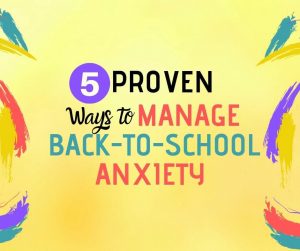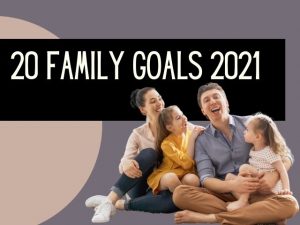What are counseling activities? How can they be used?
How do you know if your elementary students need counseling activities or other strategies to help them deal with their issues? In this post I will offer some general guidelines on how counselors and school staff can use a strategy called Counseling Activities with Elementary Students.
But first, let’s talk about Counseling Activities in general.
What are the roles of an elementary school counselor provide examples?
counselors who work in elementary schools provide a wide range of counseling services for students. These include:
– providing direct counseling/consultation services; – teaching social skills and conflict resolution strategies; – helping teachers build partnerships with parents to solve problems; – serving as a liaison among home, school and other community agencies; – conducting parent education. (
source: NC Division of Non-Public Education, 2010)
How do councellors help students develop social skills and problem solving strategies?
One way counselors provide this help is by using counseling activities. Counseling activities can be used to teach social skills and conflict resolution strategies; they can help build the partnerships between students and parents that are so very important; they can mediate when a problem arises between parent(s), teacher(s) or a school staff member.
What kinds of Counseling Activities are there?
According to David L. Hicks, M.Ed., most counselors use activities that fall into one of four categories : cognitive-intellectual activities (i.e., reading and math lessons with games and puzzles); self-esteem building exercises; stress reduction techniques (including relaxation methods such as deep breathing); emotion regulation strategies (such as ways to calm down).
There is also a fifth category, Collaborative Problem Solving Activities , which is new and different from the other four categories. But
that is the subject of a future post.
What are some examples of counseling activities?
Brief Counseling Sessions : This type of activity aims to help students solve specific problems or issues in their lives. A good example would be having a student who has been bullied by other students do a “life-press” exercise. “Life press” involves writing down on several sheets of paper all the good things and bad things you experience during one day (from when you wake up until you go to sleep). Then, after everyone in class is finished, everyone takes turns reading aloud what they have written while everyone else listens and thinks about how we could use our own experiences for support if it were us experiencing something like that first hand .
Another approach is to have students write down how they feel about a problem, and then once they are finished reading it, ask them to think about what the best solution is.
A class game like “Stepping Stone” can be used to model for students how conflicts can be resolved through discussion. In this case, the school counselor reads an example of a situation that could lead to conflict using either a fictional story or a real-life scenario involving her own students. Then she talks about ways that such situations can be avoided or resolved through collaboration, compromise , etc. Students then divide into groups and discuss/compete with each other by coming up with their own solutions (which should ideally not begin with someone saying “I don’t care”). After 5 minutes , the groups will discuss/debate their solutions with each other. Then, they can individually write down who came up with what idea and why it was good or bad (not to be shared). Usually students are pretty honest about this part – at least as far as being honest within a group setting goes. The counselor then has the students consolidate all of these ideas on a chalkboard or flip chart in order to bring clarity to everyone’s thinking and ensure that no good ideas have been lost .
Flip Chart Exercises : This kind of activity provides opportunities for more spontaneous sharing among small groups in order to clarify issues and problems; clarify values; think through possible solutions together; stimulate communication. There are many different types of flip-chart exercises ; it is not important to know the different types as long as you are comfortable with one style. The main purpose of these activities is to give students an opportunity to reflect about where they are in their lives and what they want for their futures. They also help students become more aware of themselves and others.
This might involve going around the room asking everyone questions such as “what do you like most/least about your life?” or “if money was no object, what would you do if you were given a week off from school?”; then sometimes it’s useful to have a discussion among small groups before sharing the information with the whole class (e.g., see if there are any common themes/ideas that stand out) .
Group Counseling : This type of activity is often used to help students deal with issues that are common among a group (such as anger, divorce , etc.). A teacher-facilitated discussion using questionnaires or surveys can be followed by small-group activities designed to further probe students’ feelings and thoughts.
Problem Solving : This approach helps students develop healthy problem-solving skills . It focuses on helping them develop insights into their problems and increases their awareness of the consequences of their behavior. The counselor could have them fill in a scoring sheet about themselves where they mark down things they do well and poorly (this encourages honesty). Then during a class discussion, the scores are revealed so that everyone realizes how others see him/her. This
can then be followed up by a discussion about how to improve the weaker areas of one’s life.
The following are some other activities which might be useful in class :
– “Secret Admirers”: This facilitates sharing feelings among students who may not feel comfortable doing so otherwise. Students write down on slips of paper whom they admire, and put them into bags for each group (or slip them under people’s desks). Each student picks out someone else’s name from their bag, finds that person, and tells him/her what he/she admires about him/her .
– “My Favorite: …” is very similar to the above activity, except instead of having everyone writing down who they admire and then picking each other out of
the bag, they write down their favorite item (this can be anything from a food, movie, musician, etc.); thus it’s more of an ice-breaker activity .
– “The Coach”; This is basically a variation of group counseling. Students divide up into groups and are given time to discuss issues amongst themselves. The counselor or teacher then leads these discussions in order to help students deal with commonly occurring problems. “Letters” between two different classes may also be used to facilitate communication and clarity between them regarding challenges one student may have had within another class (with regard to grading, etc.).
Informational Interviews : These are structured interviews that require some proactiveness on the part of the interviewee. Individual students contact people they are interested in talking with and arrange a time to talk on the phone or set up an actual appointment for coffee. These interviews can be used as introductions to other careers, volunteer opportunities, etc.
Example: I’d like you to meet Ms. Jones. She is not only a teacher, but also works at a local bank as well. Students choose one person from each group to present back information about their informational interview in the form of either a poster or short speech before the entire class .
Student-to-Student Interviews : In this activity students are paired off with someone that they do not know very well (or who does not usually speak up) and have them ask questions such as “what’s your favorite class?”, “what’s your favorite memory of high school?”, etc. These interviews can be followed up by a discussion with the whole class which allows other students to inquire about someone they wouldn’t ordinarily have conversation with.
Demographic Survey: This is a commonly used activity in classes where I previously tutored (and was actually part of my final exam). Students are usually given a survey consisting of demographic questions regarding themselves along with their parents’ education levels, occupations, annual income, etc. Usually such surveys are found online and require very little preparation time for the teacher; however if none is available, there are some on this site that you may find useful .
The following ideas all involve making use of technology:
Online Profile : This activity can be done in many ways . For example, you may want to have students make online profiles of themselves and then facilitate conversations regarding those profiles; or set up a profile for the class as a whole and ask them what they like about school, their favorite class etc. This could also be followed by facilitated discussion using social media (such as Reddit).
Other ideas:
– Virtual Field Trip where students talk about states which they would like to visit before they graduate high school (this is a more creative extension of traditional field trips).
Students could do this with either live chats or even video chat sessions if there are enough computers available.
– ” Town Hall Meeting” – Students discuss various issues in order to learn how to be more effective leaders. They should be encouraged to use back-channel cues, etc. to maintain orderly discussions; however they should also practice their speeches as possible public speakers.
How do you make therapy groups fun?
To be honest, learning about counseling is usually not that “fun” (it involves thinking, talking and writing). That’s why the more fun activities are used to provide a break from the theoretical side of counseling. After all, it’s no different than when you do homework; if you are doing it for too long, you might start to get bored or lose focus.
Another good reason to use these types of activities is that they mirror real-life situations – e.g., when someone has depression but can’t think clearly enough to write out their thoughts on paper or simply doesn’t have time because of outside commitments (e.g., having to take care of a child); or anxiety disorders such as OCD where people often
Counseling activities for kids
Was this helpful?
Good job! Please give your positive feedback
How could we improve this post? Please Help us.



